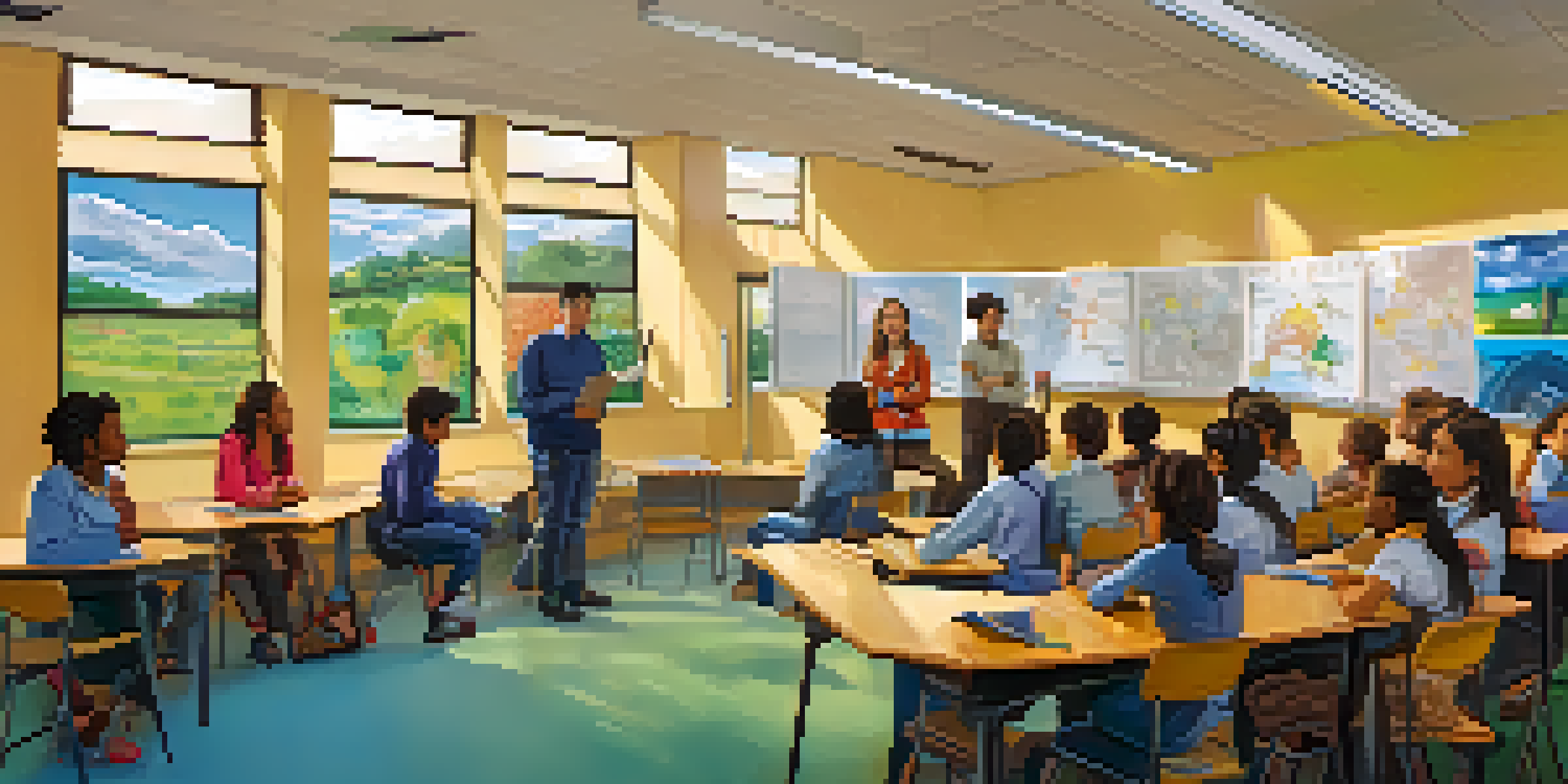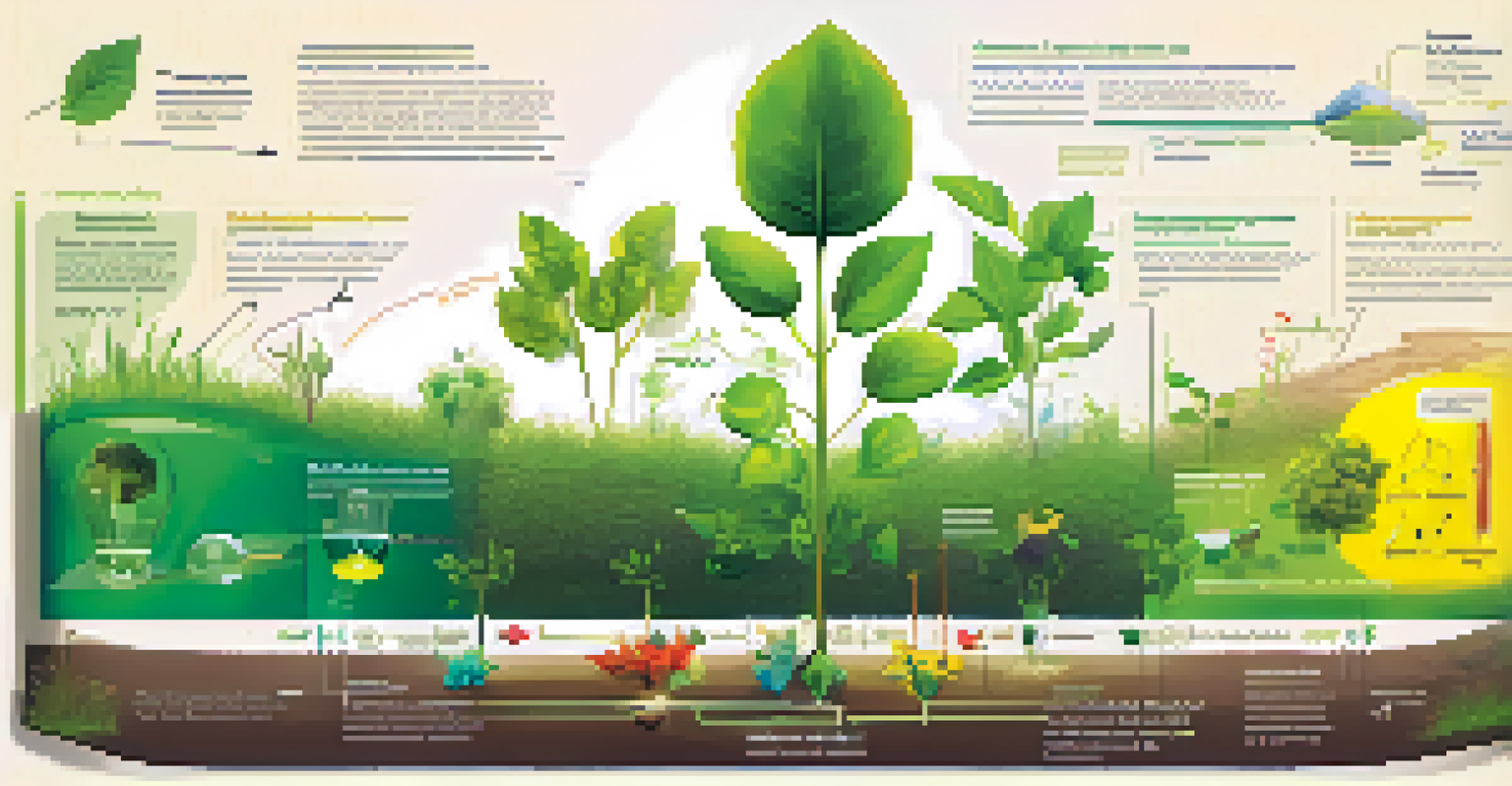Using Storytelling to Enhance Engagement in STEM Learning

The Power of Storytelling in Learning
Storytelling is a powerful tool that has been used for centuries to convey ideas and experiences. In the context of STEM learning, it can transform abstract concepts into relatable narratives. By framing scientific principles within a story, students can connect emotionally and intellectually, making the material more memorable.
Storytelling is the most powerful way to put ideas into the world today.
When students hear a story, they are not just passive listeners; they become active participants. Their imaginations spark as they visualize the scenarios, which enhances retention and understanding. This engagement is crucial, particularly in STEM fields, where complex theories can often feel distant and intimidating.
For instance, consider a lesson on renewable energy that weaves in the story of a community struggling with pollution. By following the journey of the community toward sustainable solutions, students gain insight into the real-world impact of their learning and are more likely to grasp the importance of the subject matter.
Creating Relatable Characters in STEM Narratives
Characters are the heartbeat of any story, and in STEM education, they can be pivotal in enhancing engagement. When students relate to characters—whether they’re scientists, engineers, or everyday people—they see reflections of themselves and their potential paths. This connection can ignite passion and curiosity about STEM fields.

For example, introducing a character who overcomes obstacles in their pursuit of a scientific breakthrough can inspire students. They might see their challenges mirrored in this character’s journey, making it easier to envision their own future in STEM. This relatability fosters a sense of belonging and encourages perseverance.
Storytelling Enhances STEM Learning
Using narratives makes complex STEM concepts relatable and memorable for students.
Furthermore, diverse characters that represent various backgrounds and experiences can enrich STEM narratives. By showcasing a range of perspectives, storytelling can highlight the collaborative nature of scientific discovery and the importance of inclusion within the field.
Integrating Real-World Challenges into STEM Stories
Real-world challenges provide a fertile ground for storytelling in STEM education. When students encounter stories that tackle current issues—like climate change or technological ethics—they see the relevance of their studies. This not only engages their minds but also instills a sense of responsibility toward solving these problems.
The stories we tell ourselves shape the way we see the world and the possibilities we pursue.
By framing lessons around actual case studies, educators can create compelling narratives that drive home the significance of STEM skills. For instance, a project on coding can be structured around a story about developing an app to help local businesses thrive. This context gives students a tangible goal and motivates them to explore their creativity.
As students work through these narratives, they develop critical thinking and problem-solving skills. They are not just learning theories; they are applying their knowledge to create solutions for real issues, making their education feel impactful and relevant.
Utilizing Visual Storytelling in STEM Education
Visual storytelling enhances engagement by appealing to the visual learning style that many students possess. Integrating graphics, videos, and animations into STEM lessons can make complex concepts more accessible. For example, a visual representation of a scientific process can clarify intricate details that might be lost in traditional lectures.
Additionally, visual storytelling can simplify data interpretation. Students can grasp statistical information more readily through infographics or animated charts, allowing for a deeper understanding of the material. This approach not only captivates attention but also fosters analytical skills.
Relatable Characters Drive Engagement
Characters in STEM stories help students see themselves in the field, igniting their interest.
Moreover, creating visual stories can be an engaging project for students themselves. By having them design presentations or videos about STEM topics, they invest in their learning process and gain valuable skills in communication and creativity.
Fostering Discussion through Storytelling in STEM
Storytelling naturally encourages discussion, making it an effective tool in STEM classrooms. When students share their thoughts about a story, they engage in critical conversations that deepen their understanding. This dialogue can also foster collaboration, as students explore different viewpoints and solutions together.
For instance, after presenting a story about a scientific discovery, educators can prompt students to debate the ethical implications of the findings. Such discussions not only enhance comprehension but also develop students’ ability to articulate their ideas and defend their opinions.
These conversations can lead to exciting projects, where students can collaborate to explore related topics or even create their own stories. This collaborative spirit is essential in STEM education, where teamwork often leads to the most innovative solutions.
Encouraging Creativity through STEM Storytelling
Creativity is a cornerstone of both storytelling and STEM. When students are encouraged to craft their own narratives around scientific concepts, they become more engaged and invested in their learning. This process allows them to explore their imaginations while solidifying their understanding of the material.
Consider a project where students write fictional stories about future technologies. Not only does this encourage creative thinking, but it also requires them to research existing technology and its potential evolution. This blend of creativity and inquiry can lead to a deeper appreciation of STEM fields.
Visuals Boost Understanding in STEM
Incorporating visuals into STEM education simplifies complex ideas and fosters creativity.
Through this creative process, students learn to approach problems from different angles, an essential skill in any scientific endeavor. As they weave their ideas into narratives, they cultivate resilience and the ability to innovate—key traits for success in STEM careers.
Measuring the Impact of Storytelling in STEM Education
To truly understand the effectiveness of storytelling in STEM learning, it’s essential to measure its impact. Educators can use assessments, surveys, and observations to gauge student engagement and comprehension before and after implementing storytelling techniques. This data can provide valuable insights into how narratives affect learning outcomes.
For example, a comparison of test scores and project quality between traditional lessons and those enhanced with storytelling can reveal significant differences. If students demonstrate higher retention rates and improved problem-solving skills through storytelling, it underscores its value in the curriculum.

Furthermore, feedback from students about their experiences can guide educators in refining their approaches. Understanding what resonates with students allows for continuous improvement, ensuring that storytelling remains a dynamic and effective tool in STEM education.